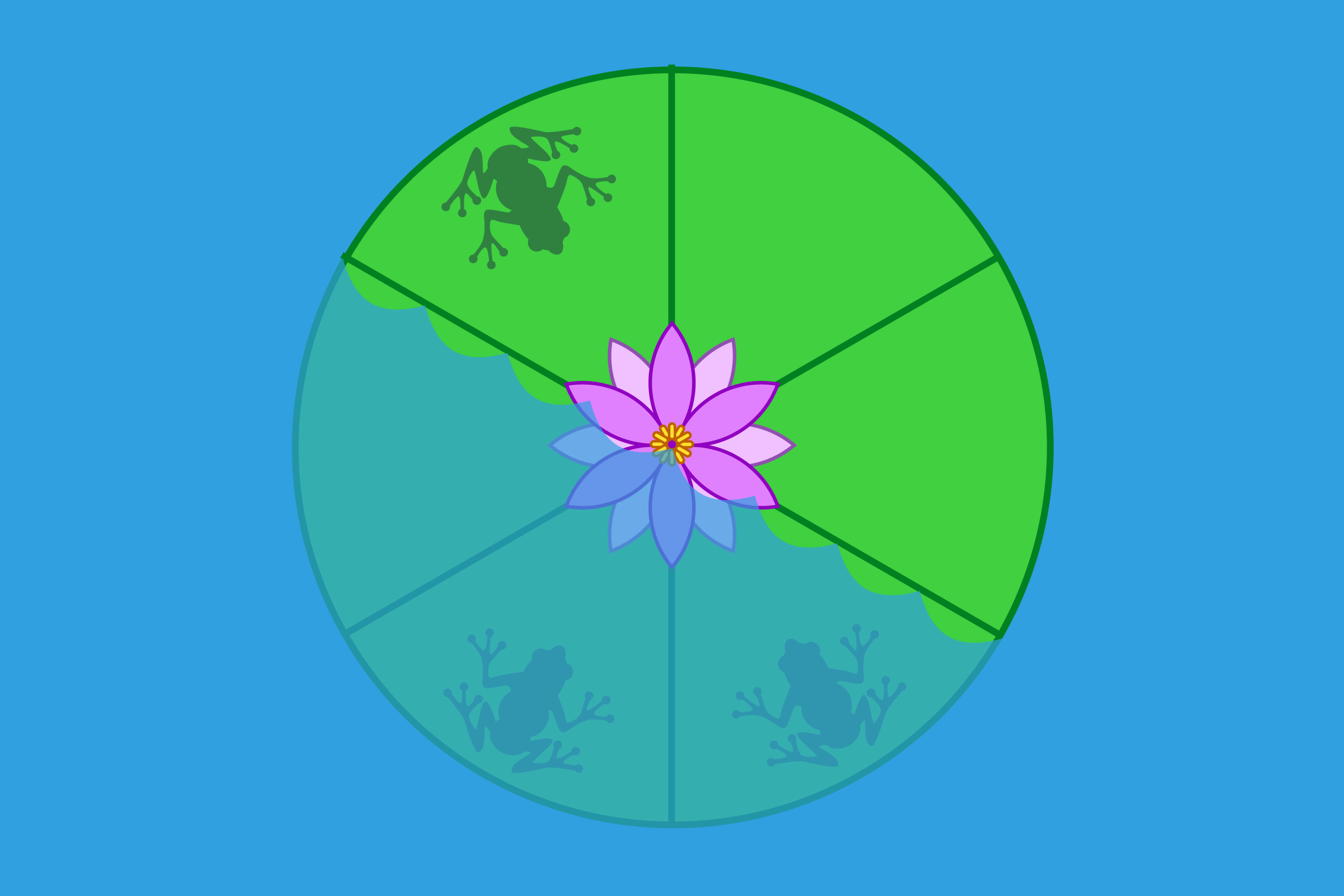Tippy Toads
How it works
Imagine that there are some toads who want to hang out together on a lily pad.
- The lily pad is divided into 6 sections, and each toad must be in a different section.
- If the toads are not balanced on the lily pad, then the lily pad will tip and part of it will sink underwater, and some of the toads will get wet.
Is it possible for the toads to hang out together so they're balanced and they all stay dry? If so, does it depend on the number of toads? What if the lily pad has more than 6 sections? For which different combinations of sections and toads is it possible for the toads to be arranged so they're balanced?
In this activity, students experiment with different combinations of sections and toads, seeing when they can and can't get the toads to be balanced. As they do this, they start to notice patterns that they can use to predict when it will and won't be possible for the toads to be balanced.
Why we like this activity
- It’s fun! Students enjoy trying to balance the toads.
- It helps to develop spatial reasoning.
- It helps to develop numerical reasoning.
It requires students to engage in mathematical habits of mind:
- Finding and using strategies to arrange the toads so they're balanced.
- Making and testing predictions about whether it will be possible or impossible for a given number of toads to be balanced on a lily pad with a given number of sections.
- Understanding and explaining your strategies and predictions.
- It has a low floor and a high ceiling: Students can start placing toads by trial and error, but figuring out general strategies and predicting when it will and won't be possible for toads to balance is more challenging!
This activity was developed in collaboration with the Julia Robinson Mathematics Festival.

